
Sharks are some of the oldest and most fierce predators that call the oceans home. These majestic animals roam the planet’s oceans around the world, but the Gulf Coast, in particular, has some of the largest and most remarkable examples of their species.
These massive ocean predators play an essential role in keeping the marine ecosystem healthy and balanced, although a lot about them is still largely unknown. Sharks are a largely misunderstood species, especially when it comes to misconceptions about human predation.
From passive filter feeders that only feed on krill and other small organisms to amazing apex sharks that should be respected, here are some of the biggest sharks found on the Gulf Coast.
Whale Shark
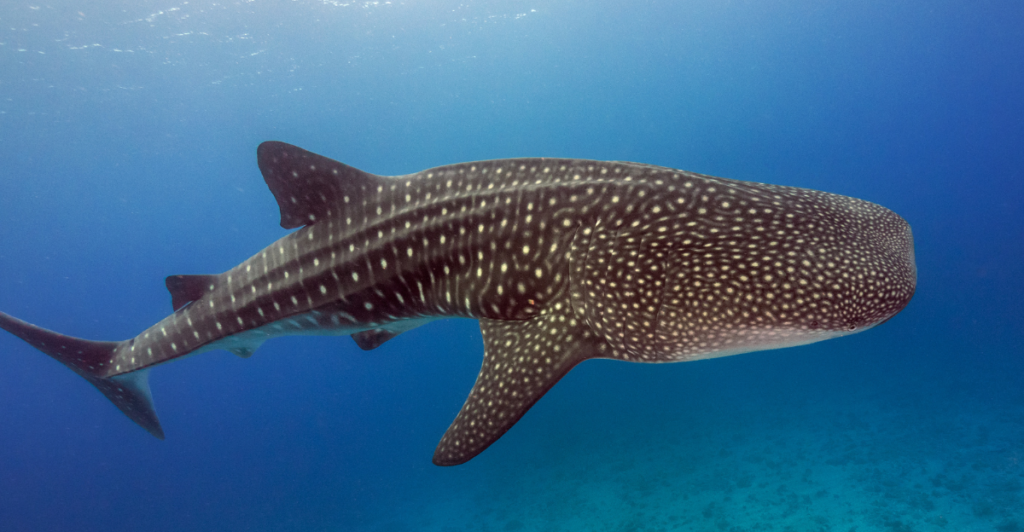
The whale shark is a well-known shark and is the biggest fish species in the world. These giants can reach awestriking sizes of over 40 feet, and some specimens have been found to weigh an incredible 19 tons.
Although this massive size might be intimidating to those who don’t know much about the whale shark, they are one of the most passive species on the planet and are adapted to filter-feeding on plankton and krill. This means they pose no threat to humans.
Whale sharks can be identified by their unique look that makes them stand out against other skark species. They have a unique dotted pattern on their skin, which is completely unique to each individual. They are popular among snorkelers and divers due to their slow speeds and passive nature.
Basking Shark
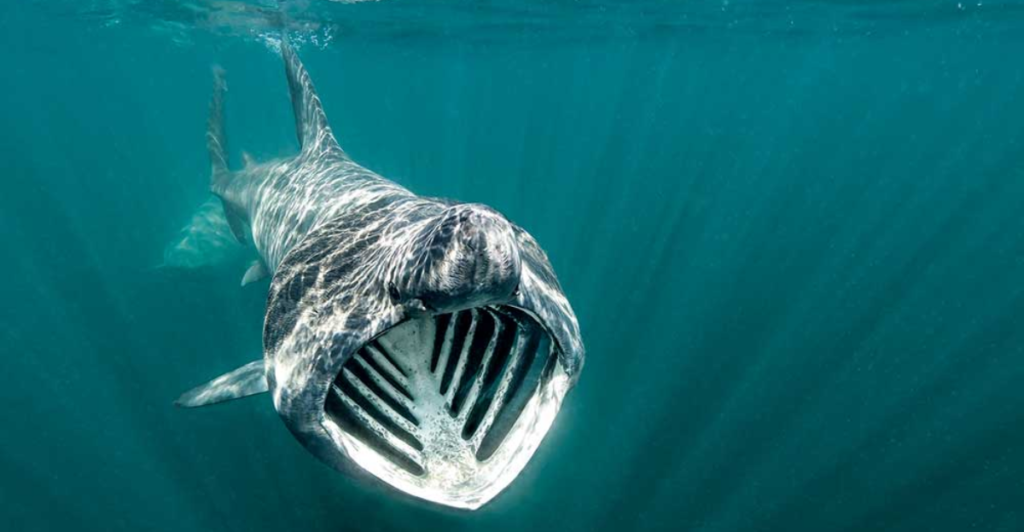
The second largest shark in the world that calls the oceans home is basking sharks. They can grow over 32 feet long and have individuals have been found weighing around 13,000 pounds. They have large mouths which they keep wide open when they swim, which can easily be mistaken for an aggressive act while it is only to filter feed on plankton and krill.
Basking sharks pose no threat to humans and travel long distances to find suitable prey. They are found in temperate places and sub-Arctic waters but have been found in the Gulf Coast, qualifying them for this list.
Filter feeding is an important part of keeping the plankton population controlled, which aids the whole marine food chain. Even though they are huge, they are still in trouble from overfishing and habitat destruction.
Great White Shark
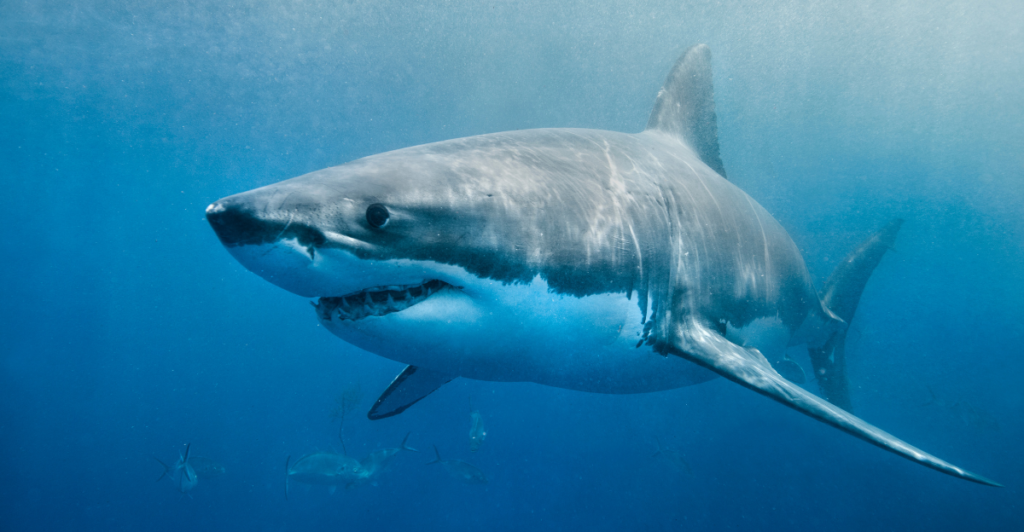
The great white shark may be the most well-known and notorious shark species that calls the planet’s ocean waters home. They are one of the largest predatory fish, reaching lengths of up to 26 feet and weighing around 5000 pounds. They are incredible hunters and most aggressive animals that prey on mammals like seals and dolphins.
They are a species that travels long distances every year, and have been studied crossing over entire ocean basins. Great whites are keystone predators in the oceans, and play an important role in keeping their marine environment balanced through population control.
They have an immensely powerful bite force and razor sharp teeth that can be replaced if one is lost. They are a perfect predator, and can breach the surface of the water to ensure that no prey gets away from them. Like many other shark species, they are vulnerable to habitat loss and overfishing.
Tiger Shark
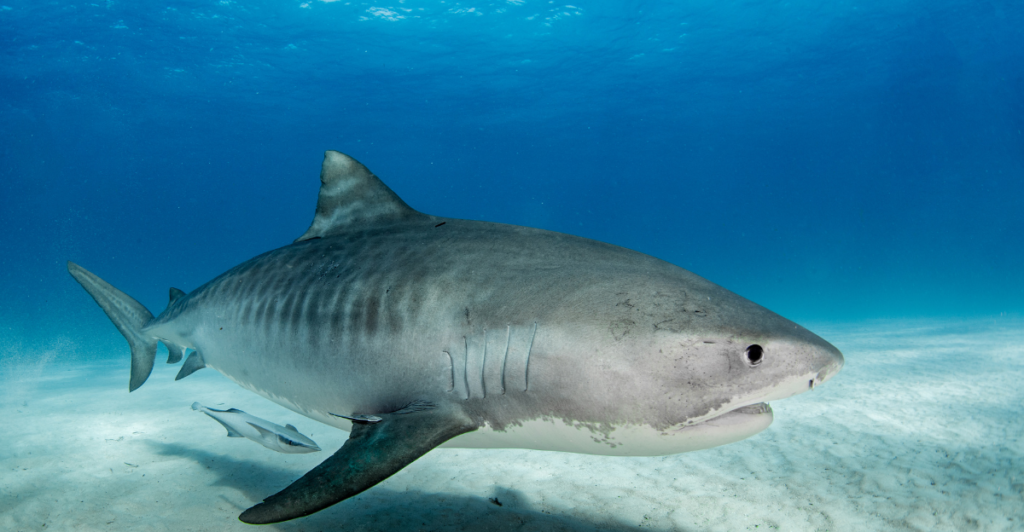
Tiger sharks have a unique reputation among shark species as one that will eat almost anything, often dubbed the “garbage eater.” They can grow up to 24 feet long and can weigh more than 1700 pounds. Scientists have studied this species intensely and found many surprising things about them.
Scientists have found all sorts of inedible and weird things inside tiger sharks’ stomachs. From plastic pollution to even license plates, it seems that these predators will eat nearly anything that they can find. They also help researchers understand more about sharks and their interaction with pollution.
They are apex predators in their ecosystems and help control the population of other marine life. Their scavenging habits do make them vulnerable to eating harmful pollutants and substances, which can affect their population.
Common Thresher Shark
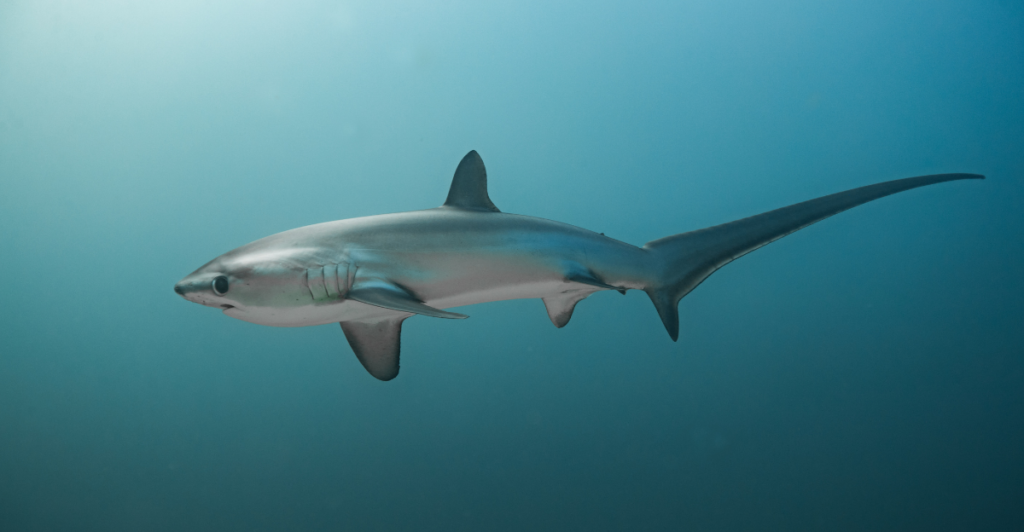
Thresher sharks are impressive animals that are known for their unique tails, which are elongated and longer than usual. They use these tails when hunting their prey and can whip fish, stunning them. They can grow more than 20 feet long and easily weigh over a thousand pounds.
They are found in the deeper waters in the Gulf Coast and are elusive but incredibly fascinating animals. They not only use their tails in hunting but also use them to keep their balance when they swim, making them exceptionally agile when on the prowl for prey.
Thresher sharks only hunt at night and use bioluminescent lures to attract prey when their surroundings are pitch black. They are impressive in size and have good hunting skills, but they are often overlooked due to their elusive nature in deep ocean waters.
Great Hammerhead Sharks
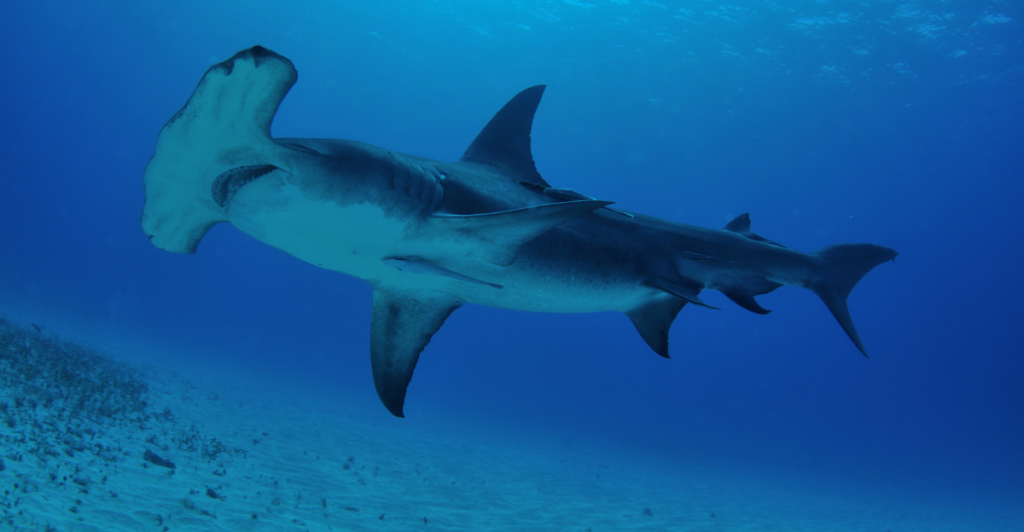
hammerhead sharks are uniquely adapted sharks that are well-known due to their strange physiology. The great hammerhead is easily recognizable because of its unmistakable hammer head shape. They are a fairly large species, and can weigh up to 1000 pounds and get 20 feet long.
They have eyes on either side of their hammer-head which gives them great vision for hunting prey such as stingrays and other bottom-dwelling animals. Great hammerheads are one of few shark species that school together and have a complex social group.
This behavior isn’t often seen in shark species, as most prefer to be lone predators. The species is currently threatened by overfishing and habitat destruction, making conservation work particularly difficult in protecting these unique and incredible animals.
Bull Shark

Bull sharks are another notorious shark species that are well-known due to their ability to do what many other shark species can’t – thrive in freshwater. These sharks are adapted to both oceans like other species but also freshwater environments like rivers.
They can grow over 11 feet long and can weigh more than 500 pounds. They are an aggressive and strong shark species and are sometimes found near the shorelines of the Gulf Coast, where they can find much of their prey, like fish, in abundance. They are an incredibly well-adapted shark species and thrive in coastal areas, causing concern for human activities.
Bull sharks can roam up river mouths and into freshwater environments, expanding their habitat past other traditional shark ecosystems. This means they are a more resilient species to ecological changes, but also makes conservation difficult when their populations become isolated.
Mako Shark
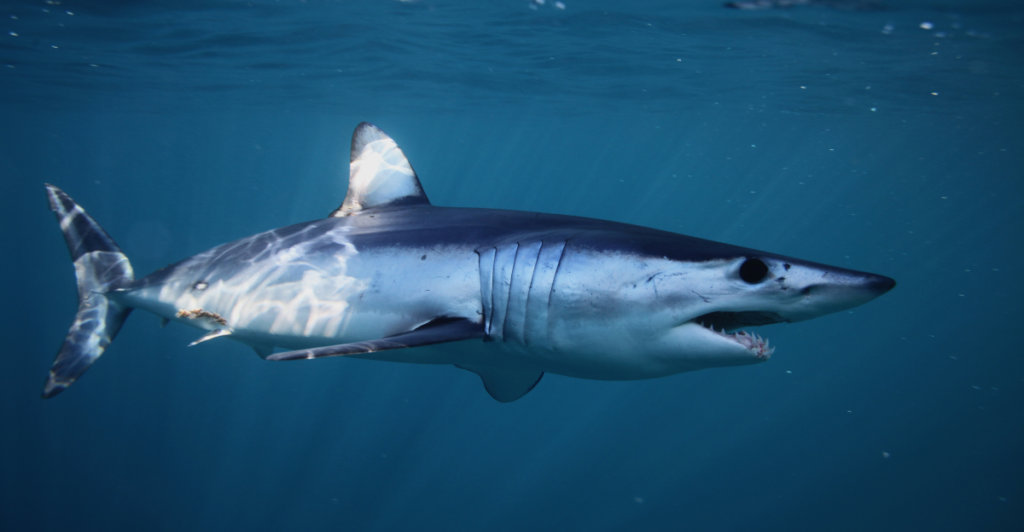
Mako sharks are an amazing species that are the shark equivalent of Formula One cars. They are the fastest species of shark, and are able to reach speeds of 46 miles per hour through the water. Despite their speed, they are still large, reaching up to 12 feet long and weighing over 1200 pounds.
Their speed gives them a lot of agility in the water, which makes them intimidating hunters in the Gulf Coast’s water. They use their speed to chase after quick prey like tuna and mackerel. When hunting or trying to escape an altercation, mako sharks can breach impressive heights into the air.
Not many shark species can breach quite as high as them, which is a reminder of their speed and agility. Mako sharks are a threatened species due to overfishing and having a high demand in commercial fisheries.
Dusky Shark
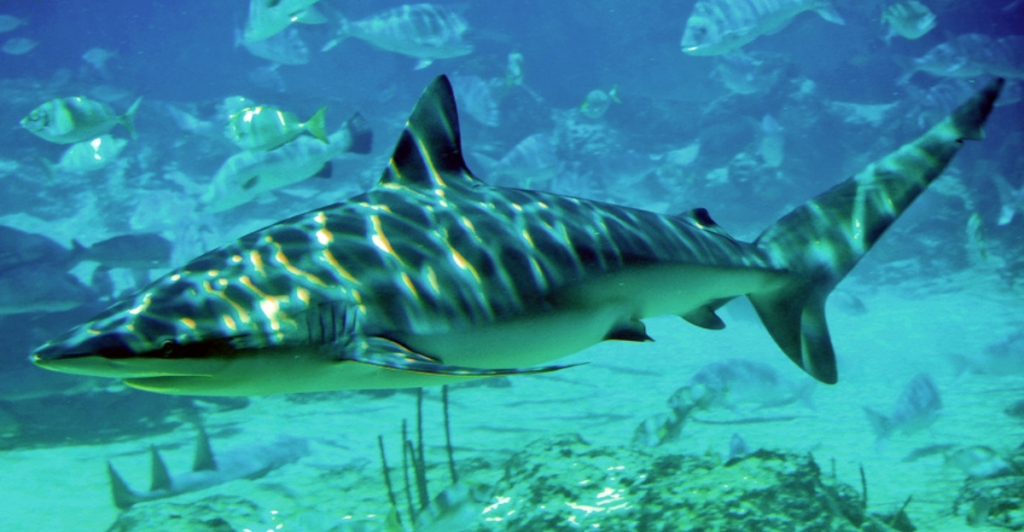
The dusky shark are one of the largest species that are concentrated along the Gulf Coast. They can reach up to 14 feet long and weigh around 800 pounds or more. They are quite a rare shark species, living in deeper waters where researchers struggle to study them.
Despite their elusive nature, they are still important animals in their environment and maintain ocean ecosystems. The species is documented to have a slow life cycle and long lifespan, making conservation difficult when their population grows at such a slow rate, along with harmful threats like overfishing and habitat loss.
There is a lack of data on these animals due to their deep ocean preference. These sharks, much like the other sharks on this list, are a reminder of the Gulf Coast’s marine biodiversity in a rapidly changing world.
Explore more of our trending stories and hit Follow to keep them coming to your feed!

Don’t miss out on more stories like this! Hit the Follow button at the top of this article to stay updated with the latest news. Share your thoughts in the comments—we’d love to hear from you!







